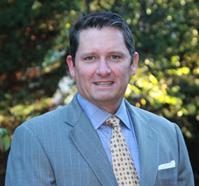What Causes Breast Cancer
Even within the modern world of medicine, how breast cancer emerges remains a mystery. Scientists still have not been able to determine the exact cause for how the malignant cells are first formed.
There are trends and risk factors that medical studies have shown which can lead to its development. Among those who are subject to greater risk include the elderly, those with cancer history in their family tree, and those who consume high levels of fat and alcohol.
Still, many who would normally be considered high-risk candidates don't get it, but others who wouldn't be at much risk do wind up with the disease. It still is the second-highest cause of cancer death among women (behind lung cancer), but there are some ways to limit one's risk.
What is Breast Cancer
Breast cancer occurs when malignant cells form and start growing within the breasts. Though both men and women can actually develop it, it rarely occurs among males.
Malignant cells, or cancer cells, develop when abnormal changes occur in growth genes. The changes, or mutations, can cause gene growth at an uncontrollable rate. This creates abnormal growth and the creation of tumors. Some tumors are benign, but malignant ones can become invasive toward other tissues, causing the cancer to spread.
The two most common forms of it are ductal carcinoma and lobular carcinoma. Ductal carcinoma forms in the lining of ducts which carry milk from the lobes to the nipples. Lobular carcinoma develops in the lobules or glands that produce milk.
The cancer can progress through several stages, but Stage 4 is the most dangerous. This is when the cancer becomes invasive and begins to spread to other parts of the body, impacting how you properly function.
Age and Estrogen
If a woman reaches age 85, then there is a 1-in-8 chance that she contracts breast cancer at some point in her life. By comparison, the odds are 1-in-20,000 chance for a typical 25-year-old woman and 1-in-93 for a 45-year-old woman.
Some suggest that greater exposure to estrogen could increase a woman's risk of developing breast cancer. Estrogen causes cells to divide on its own. But it could increase the chance of abnormalities occurring.
Fat tissue is usually a source of estrogen, especially right after menopause when ovaries temporarily stop producing estrogen. The liver can control estrogen levels, but too much alcohol consumption can damage and limit its ability to do so.
Hormones
Radiation and certain synthetic chemicals could also alter genes which eventually form into malignant cancer tumors.
For a time, women under the age of 50 saw an increase in being diagnosed with the disease. Some speculated that the use of synthetic hormones – or "other forms" of hormone replacement therapy – are more likely to contract this form of cancer. The decrease usage of synthetic hormones has also led to a decrease in women who develop breast cancer.
Genetics
According to research, certain genes known as BRCA1 and BRCA2 help suppress potential tumors from occurring. If abnormalities occur in these genes, this would sometimes alter the genes' role. These genes wouldn't be as effective as tumor suppressors, leaving women susceptible to a cancerous mutation.
Supposedly, one in 200 women have an abnormal BRCA1 or BRCA2 gene. The abnormalities make it easier for cancer to form. This isn't a guarantee toward actually getting breast cancer as it can remain benign. However, abnormal genes affecting a body's ability to suppress tumors can be passed onto descendants.
Survival
Breast cancer is currently the second-leading cancer cause of death among women. Roughly 250,000 get diagnosed with it and 40,000 women die from it each year.
However, advances in therapy and earlier screening have helped increase the survival rate to almost 90 percent in first-world countries. In the United States, there are an estimated 2.5 million breast cancer survivors, providing plenty of hope for those who do develop the disease.








